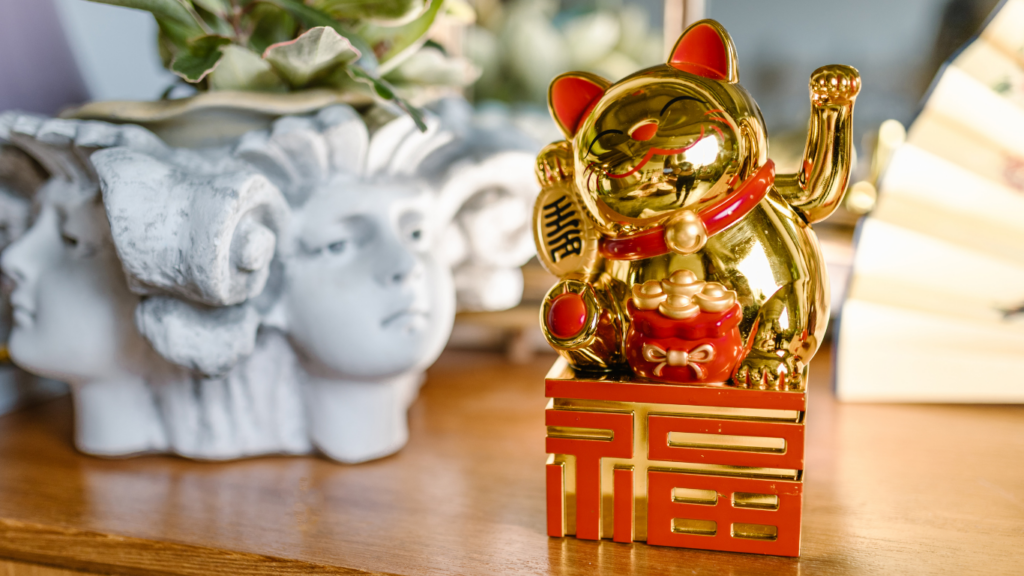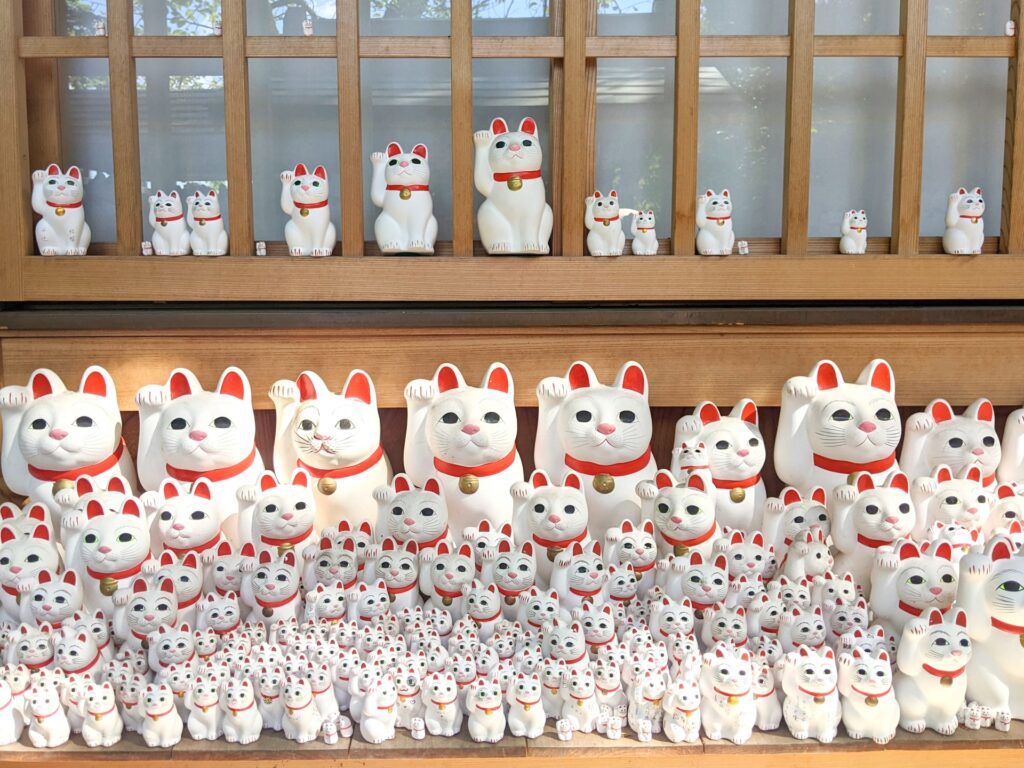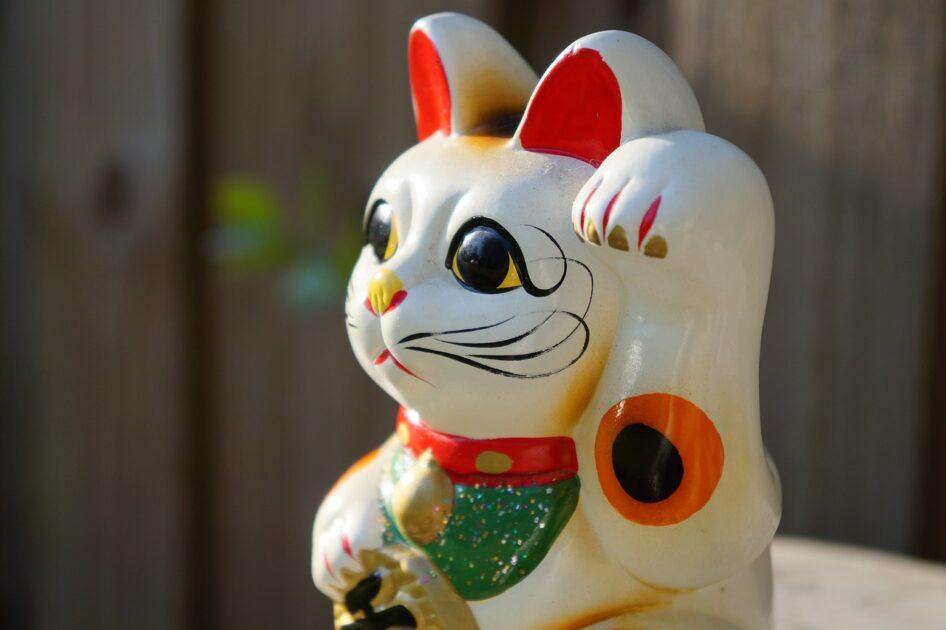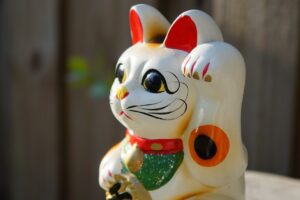The Maneki-neko ( beckoning cat ) is a symbol of good luck and wealth in Japan. It is a famous good-luck charm that is believed to bring prosperity and happiness to businesses and homes. You can see Maneki-neko in many places, but not many people know about its history, types, and the different meanings of its raised hand or color. In this article, we will introduce the different types, meanings, and history of the Maneki-neko.
Types and Meanings of the Maneki-neko
The Maneki-neko has different meanings depending on how it raises its paw and its color. Let’s explore the various wishes and fortunes associated with each type.
Meaning Based on Raised Paw

Right Paw Raised Maneki-neko
A cat with its right paw raised is believed to bring wealth and good fortune, especially for business prosperity and financial success.
Left Paw Raised Maneki-neko
A cat with its left paw raised is thought to invite people, increasing customer traffic. It is often seen in restaurants and stores.
Both Paws Raised Maneki-neko
A Maneki-neko with both paws raised is believed to bring overall good luck, such as family safety and health. However, some people consider it “greedy” because of its appearance, so it’s chosen with care.
Meaning Based on Color
The color of the Maneki-neko also has different meanings.
White Maneki-neko
Symbolizing purity and happiness, this cat is often chosen to wish for peace and happiness in the home.

Black Maneki-neko
It represents protection from evil spirits and bad luck, often used for the safety of women and children.

Gold-colored Maneki-neko
A symbol of wealth and prosperity, the golden Maneki-neko is popular for wishing business success and financial gain.

Red Maneki-neko
This color represents health and safety, believed to help prevent illness and maintain well-being.
Blue Maneki-neko
Representing success in academics or work, this color is often chosen by students or business professionals.
The History of the Maneki-neko
There are various theories about the origin of the Maneki-neko, but it is believed to date back to the Edo period ( 1603-1868 ). Two well-known legends are often shared.
The Legend of the Maneki-neko and Gotokuji Temple
Gotokuji Temple in Setagaya, Tokyo, is considered the birthplace of the Maneki-neko. According to the legend, a samurai passing near the temple saw a cat raise its paw and invite him in. After entering the temple, he avoided a thunderstorm and listened to the monks’ teachings. Grateful for his safe escape, the samurai supported the temple, which flourished, and the Maneki-neko was created as a token of thanks.

The Legend of the Maneki-neko and Imado Shrine in Asakusa
Another famous legend comes from Imado Shrine in Tokyo. A poor woman’s cat appeared in her dream and told her, “ Make a Maneki-neko, and good fortune will come. ” She made the cat, and it became popular as a good-luck charm for business success. Imado Shrine is still visited by many people who believe in the power of the Maneki-neko.
The Maneki-neko Today and Its Popularity
Even today, the Maneki-neko remains a popular item. Not only in Japan but also around the world, it is known as a symbol of good fortune and is often bought as a souvenir. Modern versions of the Maneki-neko, using new designs and materials, have also appeared, and they are enjoyed as interior decorations or accessories.
The unique appearance of the Maneki-neko and its deep meaning continue to make it beloved by many. Its adorable raised paw symbolizes the wishes and prayers of people, and it has become an enduring presence in daily life, beyond just a decorative item.
Conclusion
The Maneki-neko is a traditional Japanese good-luck charm with a rich history. Its raised paw and colors carry various meanings. Rooted in legends from Gotokuji Temple and Imado Shrine, the Maneki-neko has grown with Japanese life and is now cherished by people around the world. The charm of the small cat raising its paw to bring good fortune continues to captivate hearts and will surely be loved for years to come.


